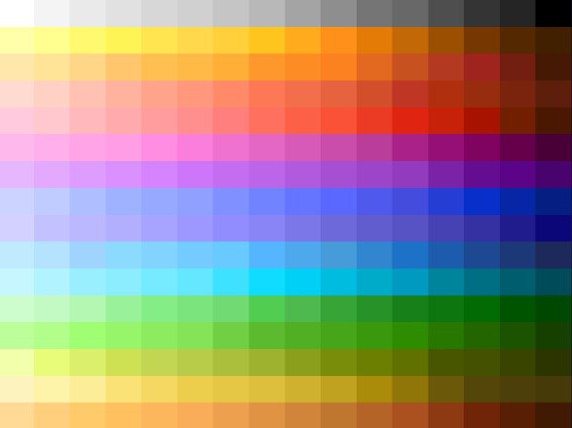The concepts of "warm" and "cold tones" are widely used in a wide variety of spheres of life, and especially in art. Almost all books related to painting, fashion or interior design mention color shades. But the authors mainly dwell on the fact that they state the fact of performing a work of art in one tone or another. Since the concepts of warm and cold colors are widespread, they require a more detailed and careful consideration.
Arnheim Theory
There is one theory that R. Arnheim created that explains warm and cold tones as a phenomenon. According to this theory, any shade can be both warm and cold. If any color deviates in the direction of another, then it can become different from the heat load than it was at the beginning. For example, yellow or red with an admixture of blue will look cold, while yellow and blue with a touch of red will look warm. From this we can conclude: an initially warm color with an admixture of a cold shade will also become cold. But this theory is not indisputable. After all, you need to consider the whole system where a particular color is located. Each color shade can become warm or cold, depending on what impurity to add to it. In painting, the shade is considered more important than the color itself. After all, the original pure color always looks strictly and impartially.
Saturation and rigor
Color "temperature" also depends on saturation. If the color has optimal saturation, then it will always look cooler than a less saturated tone. The beauty in which everything is observed with rigor is characterized as cold. Architecture, where geometric proportionality and clarity, strict symmetry of form is pronounced, is always called cold. And vice versa, if in any work of art errors, fuzziness, deviations from severity are noticeable, then it is considered warmer, spiritualized, close to everything earthly.
Color purity
When considering warm and cold tones, the concept of color purity must also be taken into account. In the color spectrum, there are some tones that are traditionally considered mixed, for example, yellow or orange. Therefore, you need to learn how to identify the main pure colors that can form the rest of the shades by mixing. The predominance of red or blue is an indicator of the temperature of a mixed hue. If the color is close to red, it is considered warm, and if to blue - cold. It is safe to say that in painting the concept of warmth and coldness of color does not bear any meaning. Important is the separation of shades into "colder" or "warmer."
Lightness and its effect on color temperature
First you need to determine what colors are black and white. It is believed that white denotes all colors at the same time, that is, it contains all the existing shades. Balance and temperature neutrality are the main qualities of white. Interestingly, in its properties, green is closest to white. Lack of color means black. He does not have his own color wave, where shades from light to dark are indicated.
Dark chill
Dark cold tones always remind a person of winter cold. These include green, blue, purple, lilac. These colors and some of their shades look cool if they are not too saturated. They also have a slightly ashy shade. The main thing in a cold color is the absence of a red tint, which is traditionally considered warm.
Light cold
Light cold tones contain pink, blue, light green color. They are not saturated and not too bright. When looking at such a tone there is a feeling of cold and breath of winter. If there is more yellow in color, then it will turn into a warm range of shades, and if blue - into cold.
How to determine which tone suits a person?
To find out what color and its tone will be person to face, the main thing is to determine the shade of his skin. Someone will go cold and contrasting winter colors, another - bright colors of spring, the luminous warmth of summer. With yellowish skin with a golden hue, it is better to choose warm tones. The combination with cold colors may be unsuccessful, as the skin will take on a sickly yellow appearance. If the complexion has a slight grayish tint and slightly casts blue, then a person will always look to gain, choosing cold tones. Against the background of warm shades, the skin will look faded and may even lose its healthy appearance. When determining suitable tones, a person should take into account contrast. Vibrant and vibrant colors are not suitable for some people, because against their background, a personality can simply be lost. In this case, you need to dwell on the gentle and calm colors. They will help emphasize the type of face and skin, make a person more visible and brighter.

Look dignified and confident - easy
Cold tones of color will be an excellent choice for people who belong to the winter type. That is, for those who have fair skin, pronounced eyes and not faded hair. For example, people with a dark shade of hair will use cool shades of blue, red and green. They emphasize strengths and hide flaws. A person will look memorable and can stand out from the crowd.
Holders of light hair should focus on such cold tones as purple, blue, light red. They will become indispensable assistants if the person wants to look confident and beautiful. Such colors shade fair hair and enable a person to be bright and outstanding. People will not pay attention to the person’s clothes, but to his face, which is very important, for example, when applying for a job. Determining your tone that will help and emphasize your merits is extremely important. To look wonderful and always to be on top is everyone’s desire. The main thing is to be able to use colors and their shades correctly.